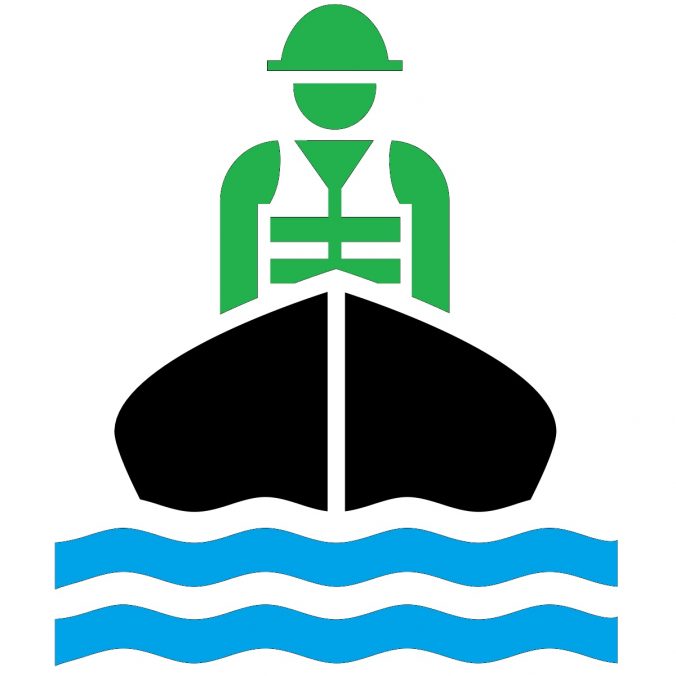Millions of United States citizens continue to battle the effects of massive hurricanes this month. Many have lost electric and water service. As water and wastewater utilities struggle to get their systems up and running again, some are in a better position than others. What makes a utility more resilient in the face of this type of natural disaster?
1. A Stormwater Utility
Communities that have created a stormwater utility have a dedicated source of revenue for dealing with issues of water quality and flood management. In addition to gray infrastructure such as detention ponds, many are investing in green infrastructure to encourage infiltration of stormwater and slow overland flow to reduce flooding. It is important to note that each stormwater utility should have an established level of service that matches the monthly fee that it charges to customers. However, these fees cannot produce infrastructure that completely protects a community from the level of Hurricane Harvey in Houston or Irma’s wrath on the US Virgin Islands in September 2017. Harvey, for instance, is being described as a 1-in-1,000 year flood event. There is just no way to prevent flooding in an event of this magnitude. But good stormwater infrastructure may help a community create a little more time for critical preparations such as the evacuation process.
2. A Rainy Day Fund
A best practice in the financial management of water, wastewater, or stormwater utility is to have reserve funds. These reserve funds can be money set aside for things such as capital improvement projects and debt. A common type of reserve fund is informally referred to as a Rainy Day Fund. It is meant to mitigate the financial disruption that can be caused by a rapid decline in revenues. Paying their water bill is not something that stranded customers can focus on during hurricane cleanup, yet the utility needs to resume operations as quickly as possible. A utility can rely on the money in its reserve fund to bounce back from this type of situation. There is no exact rule as to how much should be set aside in a reserve fund for a given utility, but the higher the likelihood of natural disaster, the higher the amount that should be in this reserve fund.
3. Getting Help from Peer Utilities
The magnitude of the impact of Irma and Harvey on the hardest-hit communities will outstrip even the healthiest reserve fund. Fortunately, there is the Water and Wastewater Agency Response (WARN) Network, where utilities help each other deal with emergencies such as hurricanes. The help may come in the form of personnel, equipment, materials, and other associated services. The Texas WARN Network has a very well-established webpage, including prominent hyperlinks to a short form that can be submitted online to request assistance. There is even a more generic link to donate to the Harvey Relief Fund for Utilities.
The Georgia WARN emailed its state members about coastal utilities needing generators as Irma entered that state on Monday, September 11. However, the WARN system is certainly not meant for intrastate assistance only. The Florida Keys Aqueduct Authority is receiving assistance from South Carolina, Tennessee, and Georgia utilities after it put out a call for help with major main breaks in its drinking water system. On the mainland, Florida utilities were among the hardest hit by Hurricane Irma.
Puerto Rico and the Virgin Islands are unfortunately not part of the WARN network. Though these islands took a beating from Irma, it will be more difficult for peer utilities to be made aware of their specific needs and come to their aid. General financial donations to the Virgin Islands are facilitated by the Community Foundation of the Virgin Islands, while people interested in physically volunteering in Puerto Rico can sign up via the Puerto Rico chapter of Voluntary Organizations Active in Disaster. To provide financial donations, opportunities are more geared toward general giving than assistance directly to utilities. The Center for International Disaster Information provides guidelines for giving. As its name suggests, this organization’s tips can also be applied to other countries such as Antigua and Barbuda which were decimated by Irma.
Are you aware of other ways to provide assistance to non-WARN communities rebuilding from Hurricanes? Please share those below in the comments section.
4. Newer Sources of Financial Help from the State
Rebuilding communities and their infrastructure after these hurricanes will take years. While peer utilities may help with immediate needs, more long-term financial help may come from the state level. For example, communities like Fair Bluff, North Carolina, received immediate disaster relief funds after Hurricane Matthew in 2016. But Fair Bluff is also receiving a grant to keep its wastewater system operating, which also serves several other small nearby towns. The money will in part fill the void left by the 25 percent of businesses, as well as many residents, leaving the community after the hurricane. The state’s new assessment initiative helps communities such as Fair Bluff evaluate and prepare to deal with their hurricane-related challenges for the long term. It is a new funding approach that some are optimistic will be applied in the future to other North Carolina towns with hurricane-related impacts on their water infrastructure.
With both hurricane season and September only half over, Hurricane Maria is set to follow a very similar path to Irma. While climate experts say we should expect more frequent and stronger hurricanes as the oceans become even just a couple of degrees warmer, utilities may want to consider some of these tools to batten down the financial hatches before the next storm.


